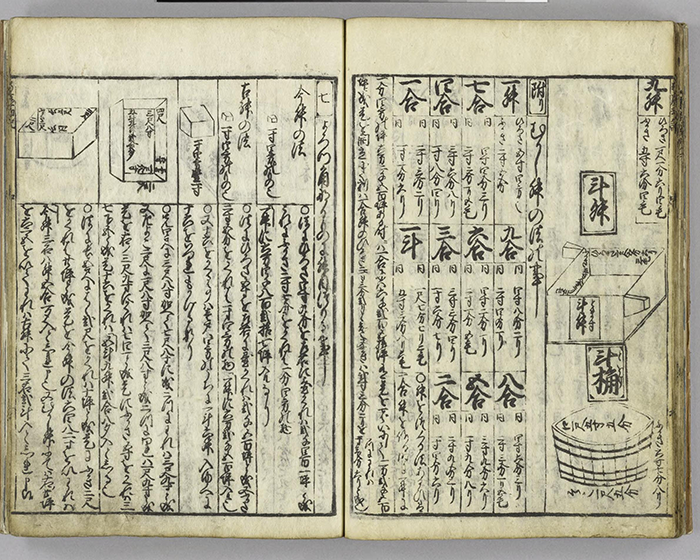- About MAA
- Membership
- MAA Publications
- Periodicals
- Blogs
- MAA Book Series
- MAA Press (an imprint of the AMS)
- MAA Notes
- MAA Reviews
- Mathematical Communication
- Information for Libraries
- Author Resources
- Advertise with MAA
- Meetings
- Competitions
- Programs
- Communities
- MAA Sections
- SIGMAA
- MAA Connect
- Students
- MAA Awards
- Awards Booklets
- Writing Awards
- Teaching Awards
- Service Awards
- Research Awards
- Lecture Awards
- Putnam Competition Individual and Team Winners
- D. E. Shaw Group AMC 8 Awards & Certificates
- Maryam Mirzakhani AMC 10 A Awards & Certificates
- Two Sigma AMC 10 B Awards & Certificates
- Jane Street AMC 12 A Awards & Certificates
- Akamai AMC 12 B Awards & Certificates
- High School Teachers
- News
You are here
Mathematical Treasures of Japan in the Edo Period: Arithmetic on the Japanese Abacus
The Japanese adopted their bead abacus, the soroban, from the Chinese suanpan which was introduced into Japan in the 14th century. The mathematician Yoshida Mitsuyoshi (1598-1673) published Shinpen jinkoki (1627) as a manual to teach basic operations using the soroban. Many later editions were published. The following images are from such a later edition. The cover bears an interesting configuration of numerals:

Instructions on using a soroban are accompanied by illustrations:

For more explicit instructions about how to use the soroban, see the Convergence article, Elementary Soroban Arithmetic Techniques in Edo Period Japan, by Rosalie Joan Hosking, Tsukane Ogawa, and Mitsuo Morimoto.
On the pages below, two situational problems are given: one involving a river, the other the sharing of an inheritance. The “inheritance problem” on the right is an example of the Josephus Problem in combinatorics: people or objects are arranged in a circle so that in an elimination process that traverses the circular arrangement several times, certain people or objects remain. The scheme of elimination should be to the advantage of the instigator who has arranged the scheme to his or her benefit.
In this particular case, a mother arranges her children, some of whom are her birth children and others of whom are her step-children, in the circle, scheming that in the elimination process her birth children will remain and obtain an available inheritance. However, she has figured wrong and her preferred children are eliminated. A mathematical problem with a moral!

Below: A problem situation is given where two gardeners wish to determine the height of a tree. They use different methods: one employing a plumb-bob, the other a staff.

Some final problems involve geometric objects in their problem situations:


See images from another copy of Shinpen jinkoki here in Convergence and in the exhibit described below.
These images are presented through the kind cooperation of the National Diet Library, Japan, and are used with permission. They were obtained from the library’s digital gallery exhibit, Japanese Mathematics in the Edo Period, where a complete examination and viewing of the item presented above can be found.
Frank J. Swetz (Pennsylvania State University), "Mathematical Treasures of Japan in the Edo Period: Arithmetic on the Japanese Abacus," Convergence (July 2018)




